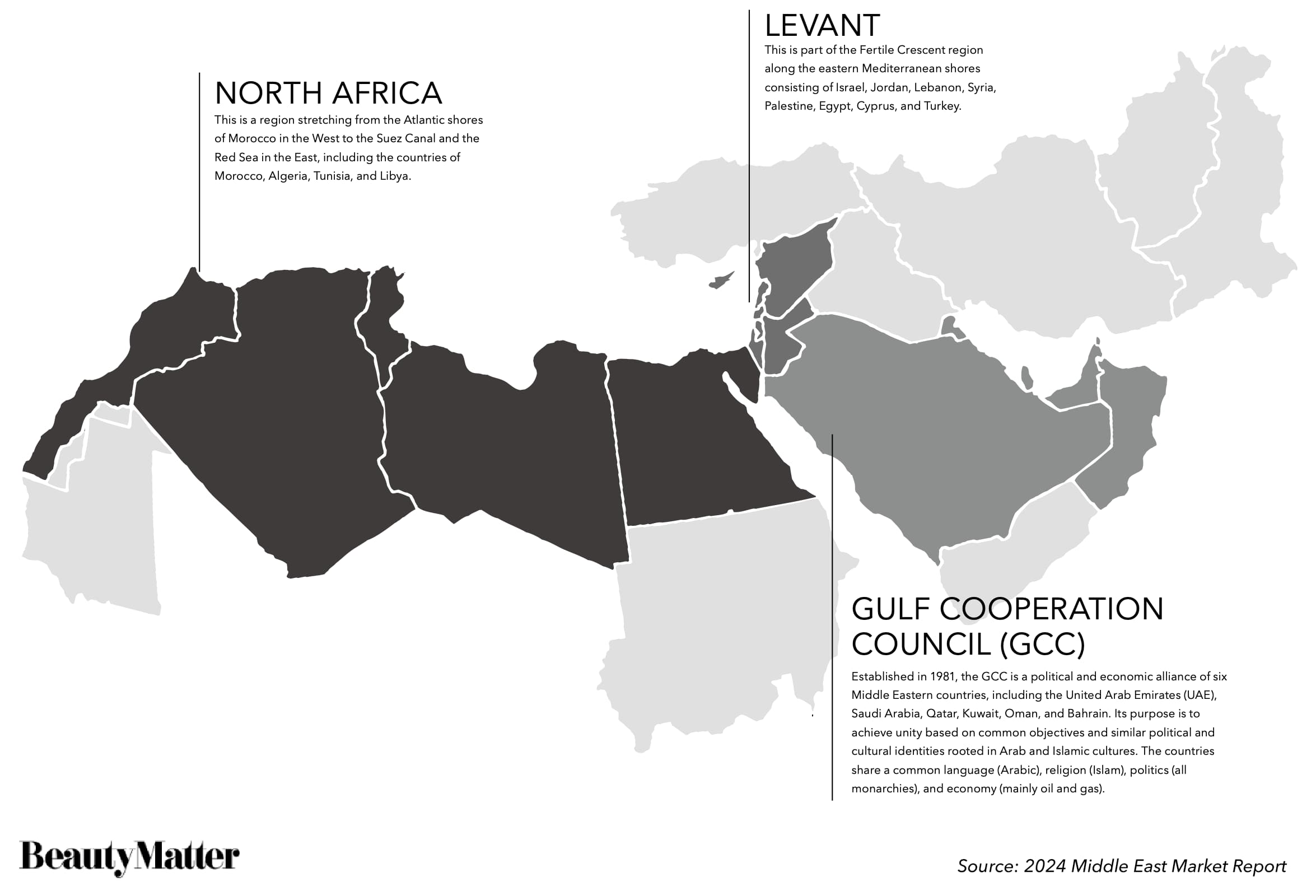The Middle East is a flexible geographic term that shifts depending on the user and the era. It is also a region divided by economic, cultural, and historical factors. While there is no single accepted definition, the Middle East is generally separated into three distinct areas: the Gulf Cooperation Council (GCC), the Levant, and North Africa. Sometimes, the entire region is referred to as MENA (Middle East and North Africa), which is typically considered to include around 19 countries, but some definitions include up to 27 countries.
With the exception of the GCC region, the fluidity in defining what constitutes the Middle East is an important nuance to consider when researching the market. The most expansive definition includes regional disparity and inequality from the economic powerhouses of the GCC to some of the most lagging and developing nations globally.

The GCC is home to some of the world’s fastest-growing economies. It is increasingly considered an economic powerhouse, creating an environment ideal for international businesses, investors, and expatriates looking for a new challenge. The World Bank anticipates the region’s GDP to triple to $6 trillion by 2050, but it could grow to $13 trillion.
For the purpose of our Middle East Beauty Report, we focus on the GCC and Levant regions, although some of the data included will be inclusive of the entire MENA region.
REGIONAL GROWTH DRIVERS ARE:
GROSS DOMESTIC PRODUCT (GDP)
The region’s GDP is substantial. The GCC expects 3.6% growth in 2024, with the World Bank anticipating GDP will triple by 2050. One of the many contributing factors is the stability of oil prices.
GREEN GROWTH
The GCC countries are pursuing ambitious targets for achieving renewable resources for electricity generation. A more eco-conscious economic model drives sustainable growth and opens up new sectors for job creation and innovation.
POPULATION
The region’s size directly impacts its economic muscle. The population nearly doubled between 1995 and 2021, reaching a demographic milestone of 56 million. The UN World projects growth to peak at 68 million by 2048.
URBANIZATION
The GCC countries’ urbanization rate of 80% or higher, which is anticipated to climb to 90% by 2050, is one of the highest in the world and speaks to concentrated areas of economic activity and increased productivity.